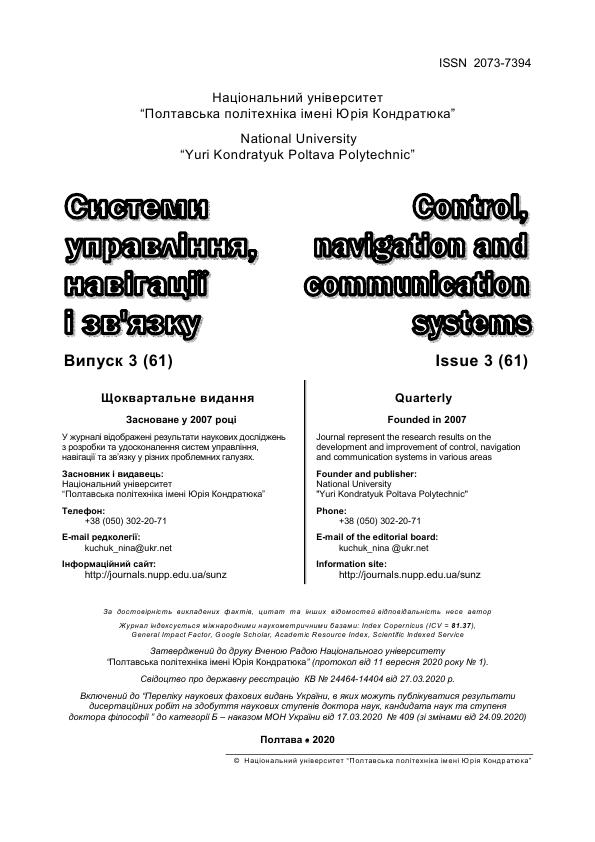INFORMATION TECHNOLOGY OF CONSTRUCTION OF EXPLANATIONS CONSIDERING TEMPORAL CHANGES IN REQUIREMENTS OF THE RECOMMENDER SYSTEM'S USERS
DOI:
https://doi.org/10.26906/SUNZ.2020.3.099Keywords:
recommender systems, explanation, formation of recommendations, formation of explanations, criteria for evaluating explanations, temporal rulesAbstract
The subject matter of the article is the processes of forming explanations for personalized recommendations for the choice of goods and services in recommendation systems. The goal is to develop an information technology for constructing detailed explanations regarding the proposed personal list of items in a recommendation system, taking into account temporal changes in consumer requirements to improve the efficiency of sales of goods and services in e-commerce systems. Tasks: development of an approach to the construction of temporal rules for the formation of an explanation based on the comparison of the number of sales on a sequence of time intervals; development of technology for constructing temporally oriented explanations regarding recommendations for choosing subjects in e-commerce systems. The approaches used are: approaches to constructing explanations regarding recommendations, taking into account changes in user preferences over time. The following results were obtained. An approach to the construction of temporal rules that determine the temporal dynamics of the preferences of the users of the recommender system has been developed. Using temporal rules, a technology for constructing and detailing explanations has been developed, taking into account changes in user requirements over time. Conclusions. The scientific novelty of the results obtained is as follows. An information technology is proposed for constructing detailed explanations regarding recommendations taking into account changes in user requirements over time. The technology uses temporal rule models and a temporal explanation interface model. The technology provides for the sequential construction of basic explanations taking into account the temporal dynamics of user preferences, further detailing of explanations by time intervals based on the coordination of temporal knowledge, as well as the formation of an interface of detailed explanations with the display of basic changes in user preferences and alternative changes at separate time intervals. In practical terms, the technology is focused on increasing consumer confidence in the received recommendation based on the reflection of changes in demand for the recommended products. The use of technology ensures the formation of a rational confirmation of the recommendation for the user in the form of a combination of quantitative and qualitative indicators, contributes to an increase in sales in the corresponding e-commerce systemDownloads
References
Izquierdo-Castillo, J. (2015). The new media business concept led by Netflix: A study of the model and its projection into the Spanish market. El Profesional de la Informacion, 24 (6), 819-826. 24. 819. doi: 10.3145/epi.2015.nov.14. Available at: https://recyt.fecyt.es/index.php/EPI/article/view/epi.2015.nov.14.
Fararni K., Aghoutane B., Riffi J., Abdelouahed S. (2020). Comparative Study on Approaches of Recommendation Systems. Embedded Systems and Artificial Intelligence, 753-764. doi: 10.23919/AEIT.2018.8577311. Available at: https://www.researchgate.net/publication/340497029_Comparative_Study_on_Approaches_of_Recommendation_System
Chalyi, S., Leshchynskyi, V., Leshchynska, I. (2019). Method of forming recommendations using temporal constraints in a situation of cyclic cold start of the recommender system. EUREKA: Physics and Engineering, 4, 34–40. doi: https://doi.org/10.21303/2461-4262.2019.00952 . Available at: http://eu-jr.eu/engineering/article/view/952/934.
Chala, O., Novikova, L., Chernyshova, L. (2019). Method for detecting shilling attacks in e-commerce systems using weighted temporal rules. EUREKA: Physics and Engineering, 5, 29-36. doi: 10.21303/2461-4262.2019.00983 http://eu-jr.eu/engineering/article/view/983/966. Available at: http://eu-jr.eu/engineering/article/view/983/966.
Lops P., Jannach D., Musto C., Bogers T., Koolen M. (2019). Trends in content-based recommendation. User Modeling and User-Adapted Interaction, 29, 239–249. doi: https://doi.org/10.1007/s11257-019-09231-w. Available at: https://link.springer.com/article/10.1007/s11257-019-09231-w.
Tsai C., Brusilovsky P. (2019). Explaining recommendations in an interactive hybrid social recommender. Proceedings of the 24th International Conference on Intelligent User Interfaces (IUI '19), 391-396. doi: 10.1145/3301275.3302318. Available at: https://dl.acm.org/doi/abs/10.1145/3301275.3302318.
Dominguez V., Messina P., Donoso-Guzmán I., Parra D. (2019). The effect of explanations and algorithmic accuracy on visual recommender systems of artistic images. Proceedings of the 24th International Conference on Intelligent User Interfaces (IUI '19), 408-416. doi: https://doi.org/10.1145/3301275.3302274. Available at: https://dl.acm.org/doi/abs/10.1145/3301275.3302274.
Rana, K. Jain, C.S. (2015). A study of the dynamic features of recommender systems. Artificial Intelligence Review, 43(1), 141-153. doi: https://doi.org/10.1007/s10462-012-9359-6. Available at: https://link.springer.com/article/10.1007/s10462-012-9359-6.
Zhou X., Sun Z., Guo G., Liu Y. (2020). Modelling Temporal Dynamics and Repeated Behaviors for Recommendation. 24th Pacific-Asia Conference Advances in Knowledge Discovery and Data Mining (PAKDD 2020), 12084, 181-193. doi: 10.1007/978-3-030-47426-3_15. Available at: https://link.springer.com/content/pdf/10.1007%2F978-3-030-47426-3_15.pdf
Liu D., Chen K., Chou Y., Lee J. (2018). Online Recommendations based on Dynamic Adjustment of Recommendation Lists. Knowledge-Based Systems, 161, 375-389. doi: 10.1016/j.knosys.2018.07.038. Available at: https://www.sciencedirect.com/science/article/abs/pii/S0950705118303915.
Cunningham, P., Doyle, D., Loughrey, J. (2003) An Evaluation of the Usefulness of Case-Based Reasoning Explanation. In: Case-Based Reasoning Research and Development:Proceedings ICCBR. Number 2689 in LNAI, Trondheim, Springer, pp. 122–130.
Cleger S., Fernndez-Luna J., F Huete J. (2014). Learning from explanations in recommender systems. Information Sciences. Information Sciences, 287, pp.90–108. .
Chalyi S., Leshchynskyi V., Leshchynska I. (2019). Моделювання пояснень щодо рекомендованого переліку об’єктів з урахуванням темпорального аспекту вибору користувача. Системи управління, навігації та зв’язку, 6 (58), 97-101. – doi:https://doi.org/10.26906/SUNZ.2019.6.097.
Chalyi, S., Leshchynskyi, V. (2020). Method of constructing explanations for recommender systems based on the temporal dynamics of user preferences. EUREKA: Physics and Engineering, 3, 43-50. doi: 10.21303/2461-4262.2020.001228. Available at: http://journal.eu-jr.eu/engineering/article/view/14.
Levykin V., Chala O. (2018). Development of a method for the probabilistic inference of sequences of a business process activities to support the business process management. Eastern-European Journal of Eenterprise Technologies, 5/3(95), 16-24. DOI: 10.15587/1729-4061.2018.142664.
Chalyi S., Leshchynskyi V., Leshchynska I. (2020). Detailing explanations in the recommender system based on matching temporal knowledge. Eastern-European Journal of Eenterprise Technologies, 4/2 (106), 6-13. DOI: 10.15587/1729-4061.2020.210013
Чалий С.Ф., Лещинський В.О., Лещинська І.О. (2020). Модель інтерфейсу пояснень з темпоральними параметра- ми в рекомендаційній системі. Системи управління, навігації та зв'язку, 2(60), 105-109. DOI: https://doi.org/10.26906/SUNZ.2020.2.105
Чалий С.Ф., Лещинський В.О., Лещинська І.О. (2018). Моделювання контексту в рекомендаційних системах. Проблеми інформаційних технологій, 1(023), 21-26.




